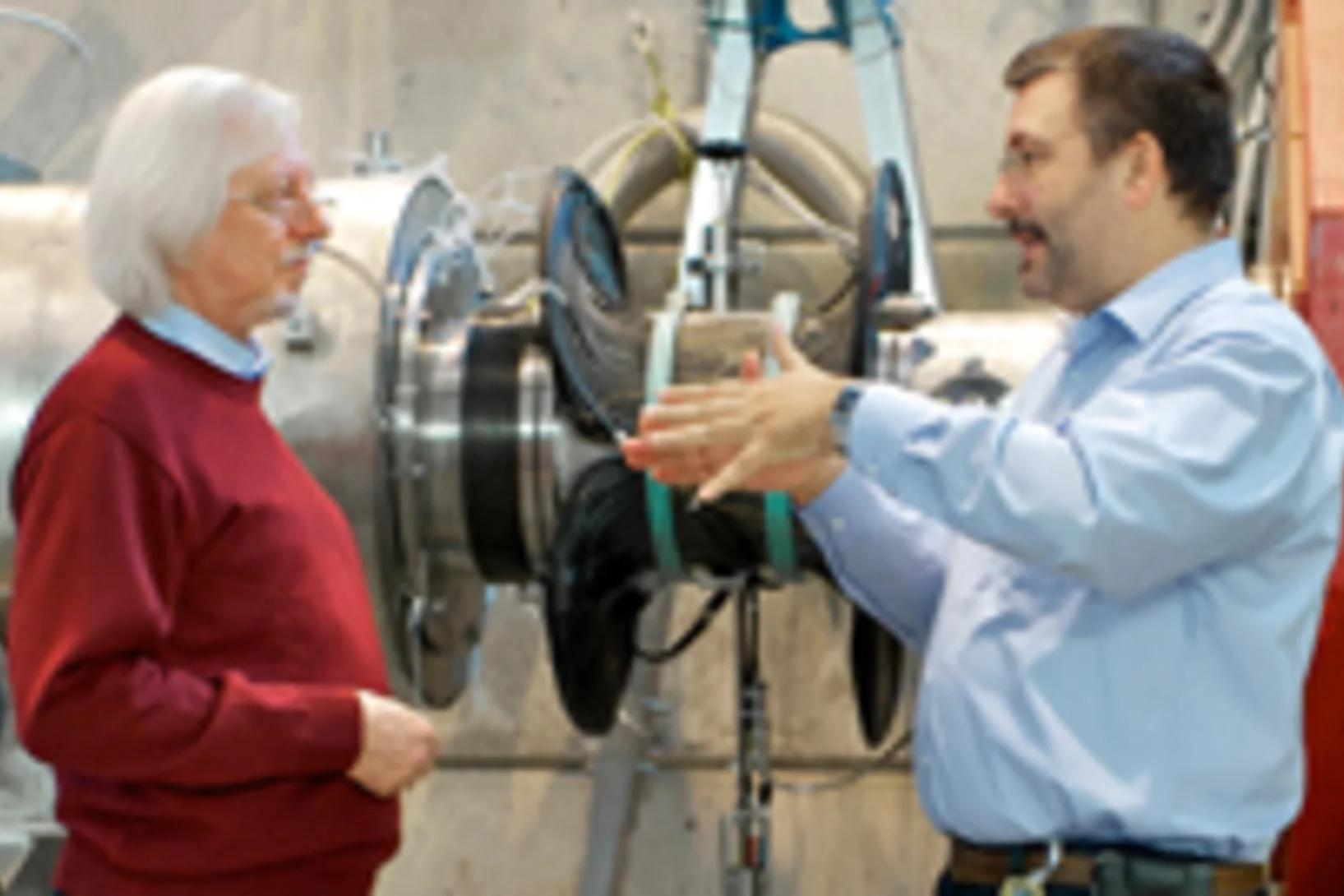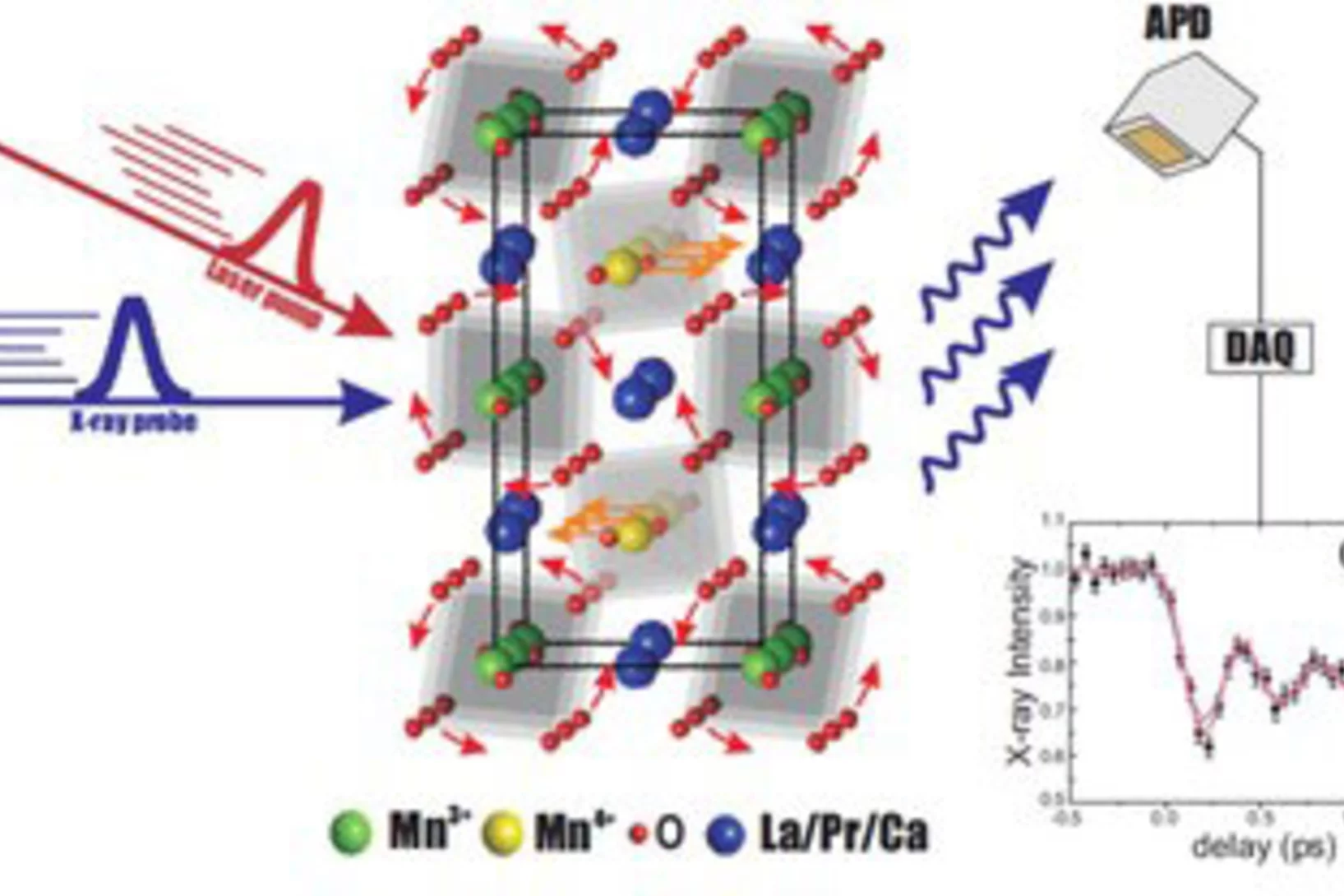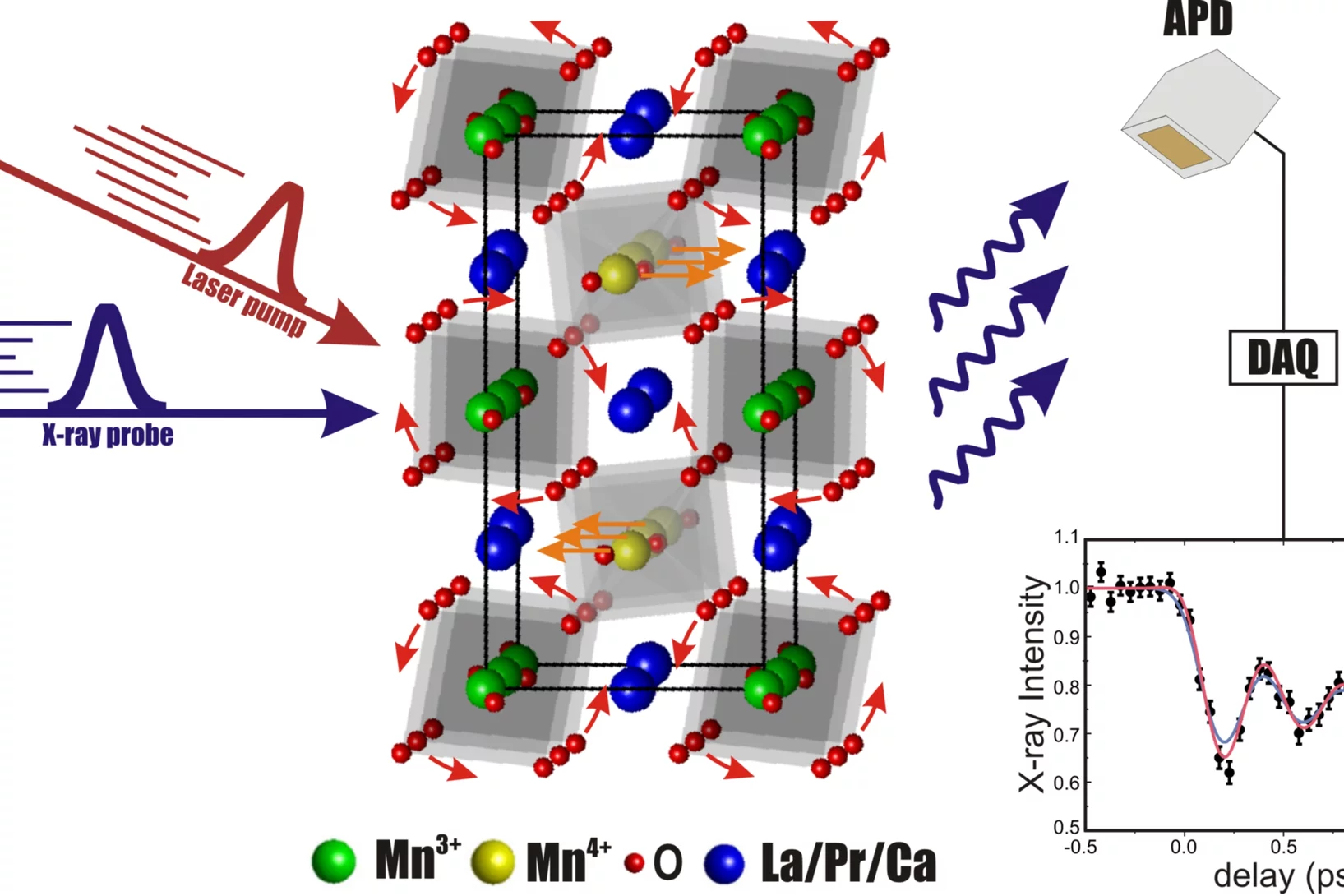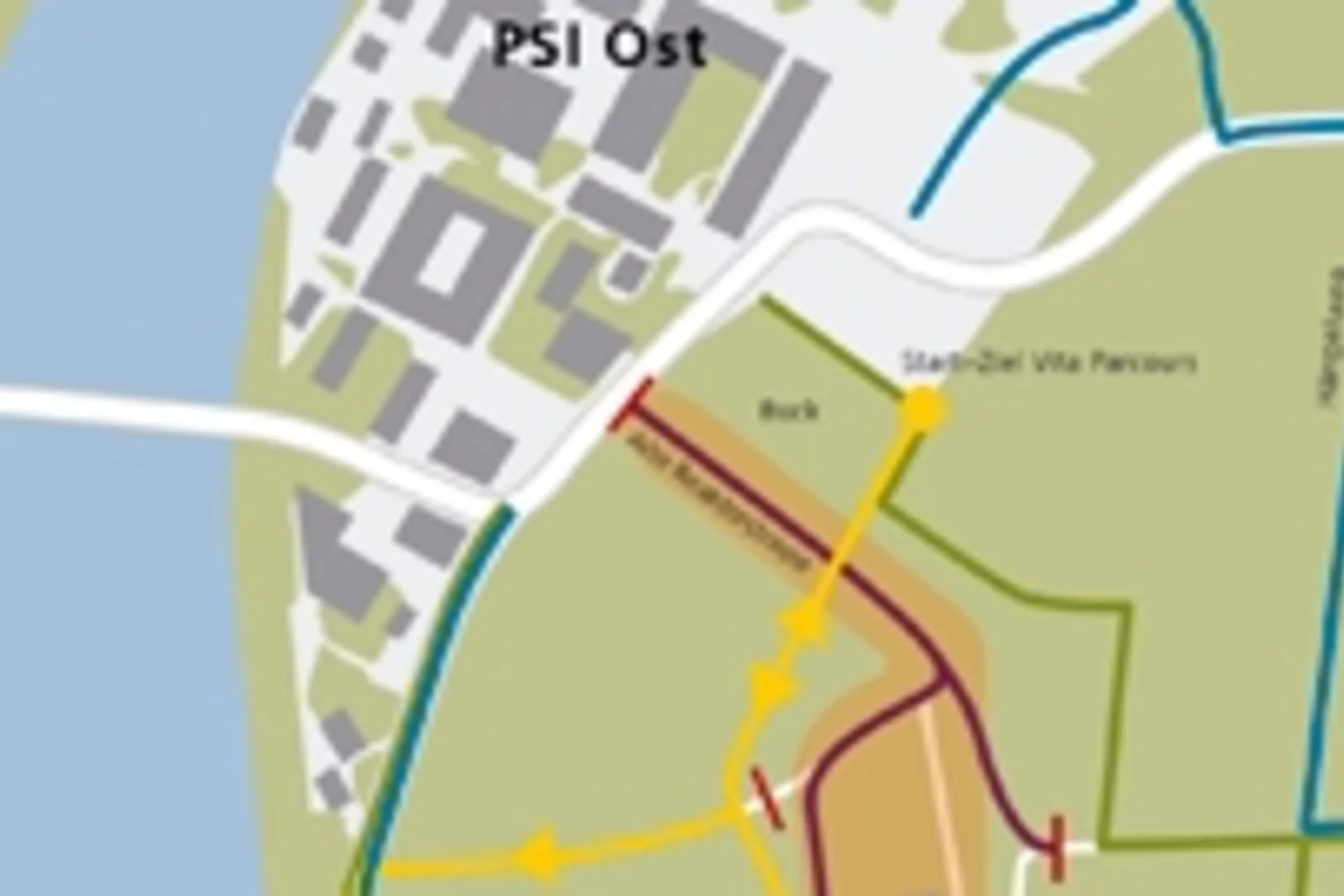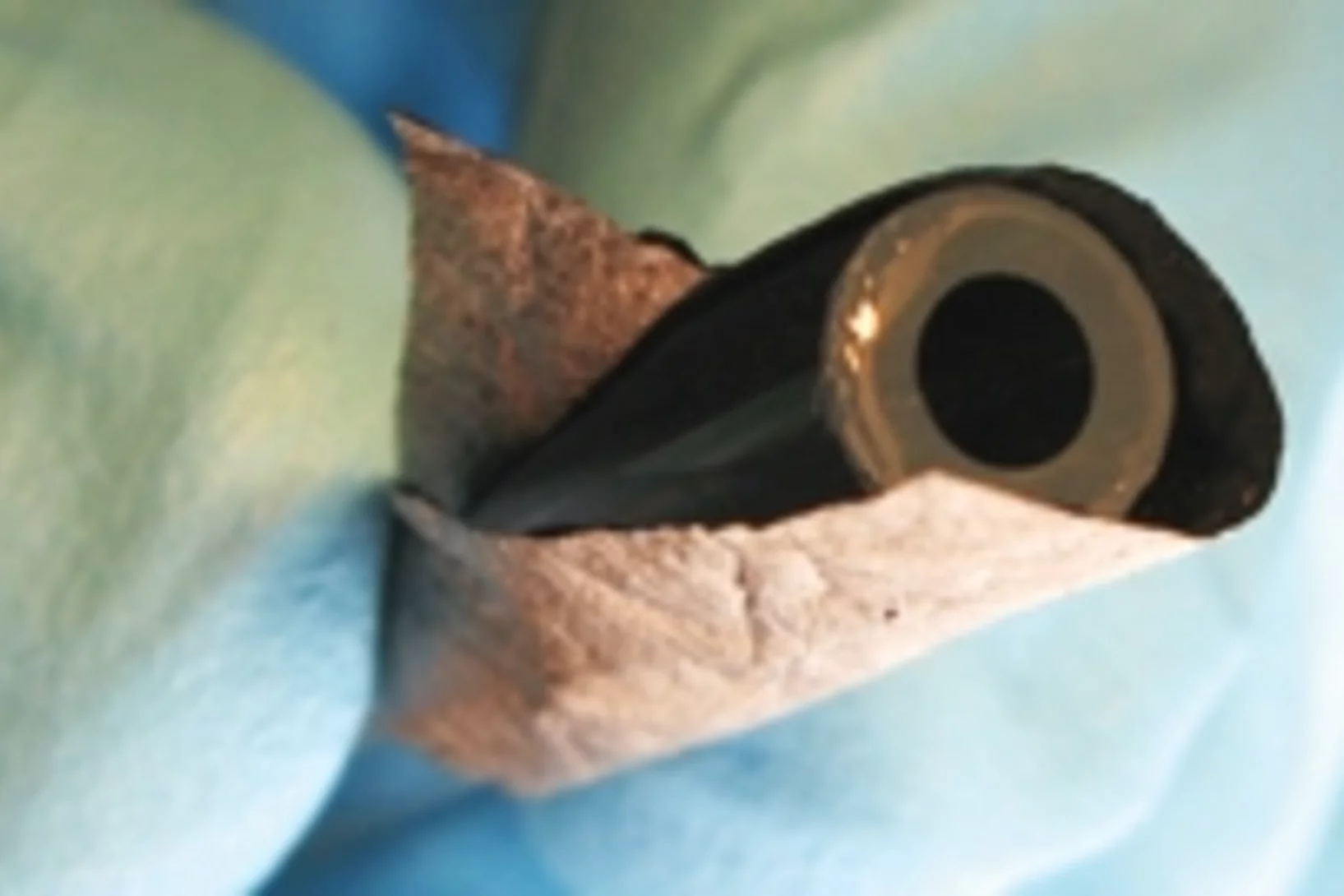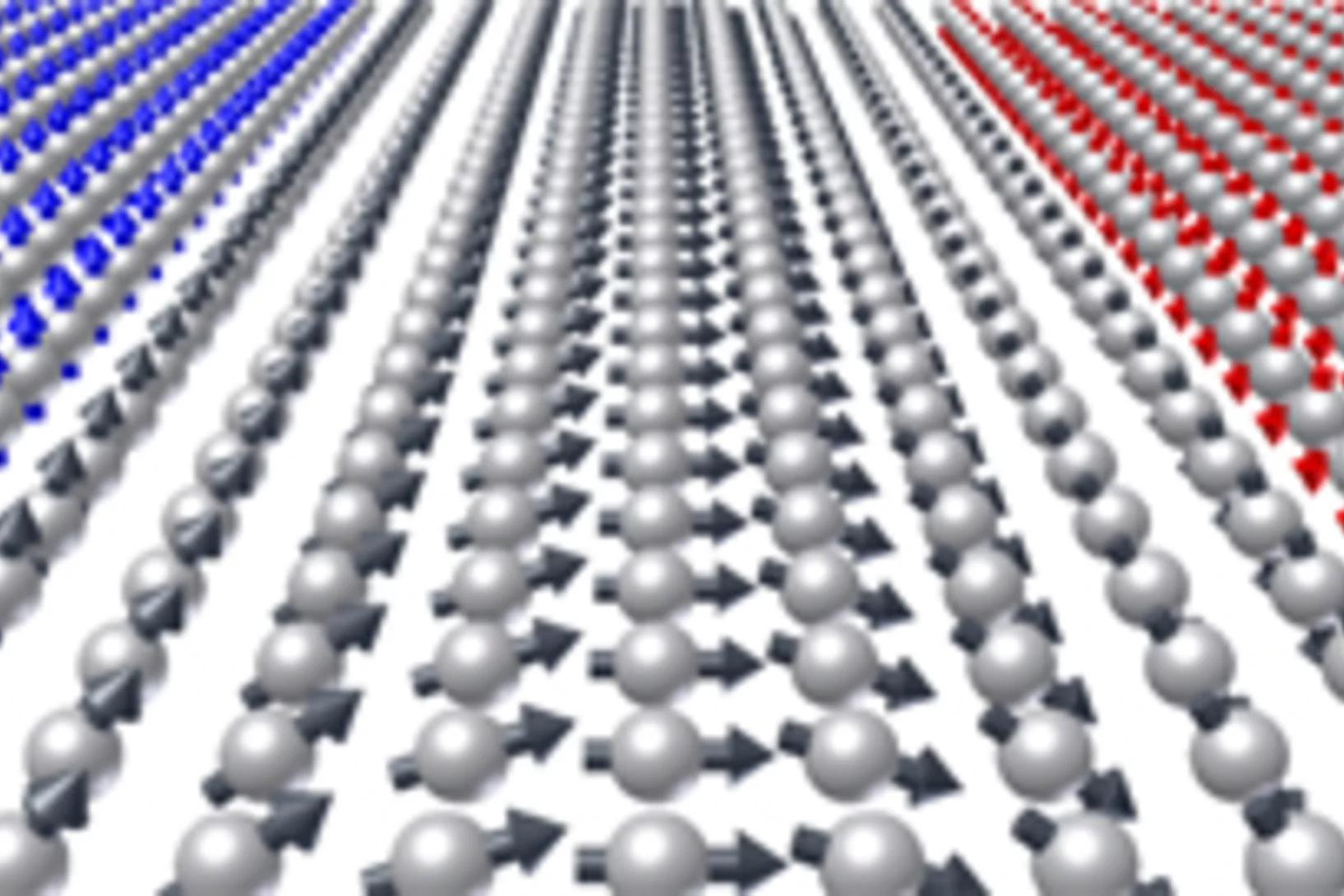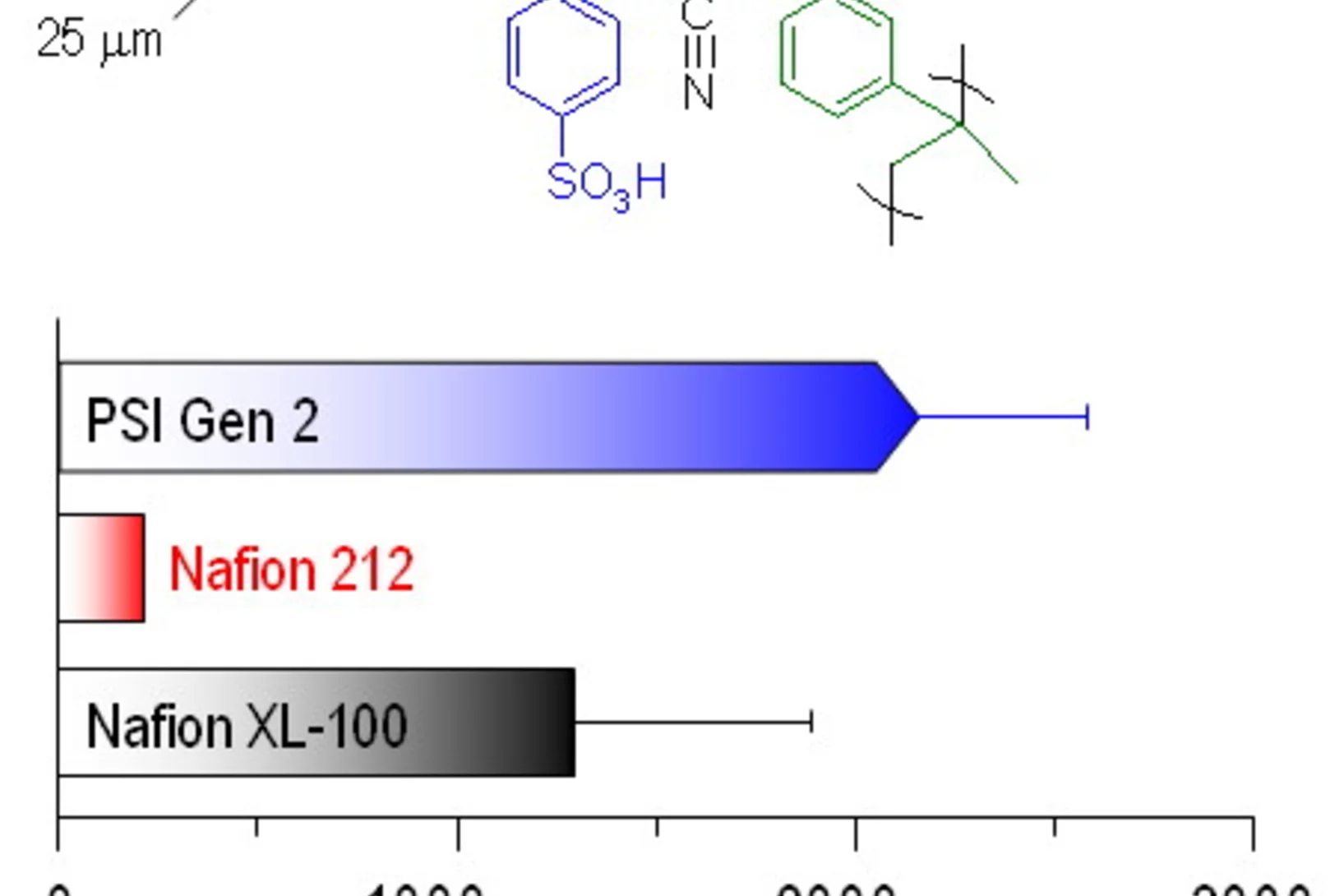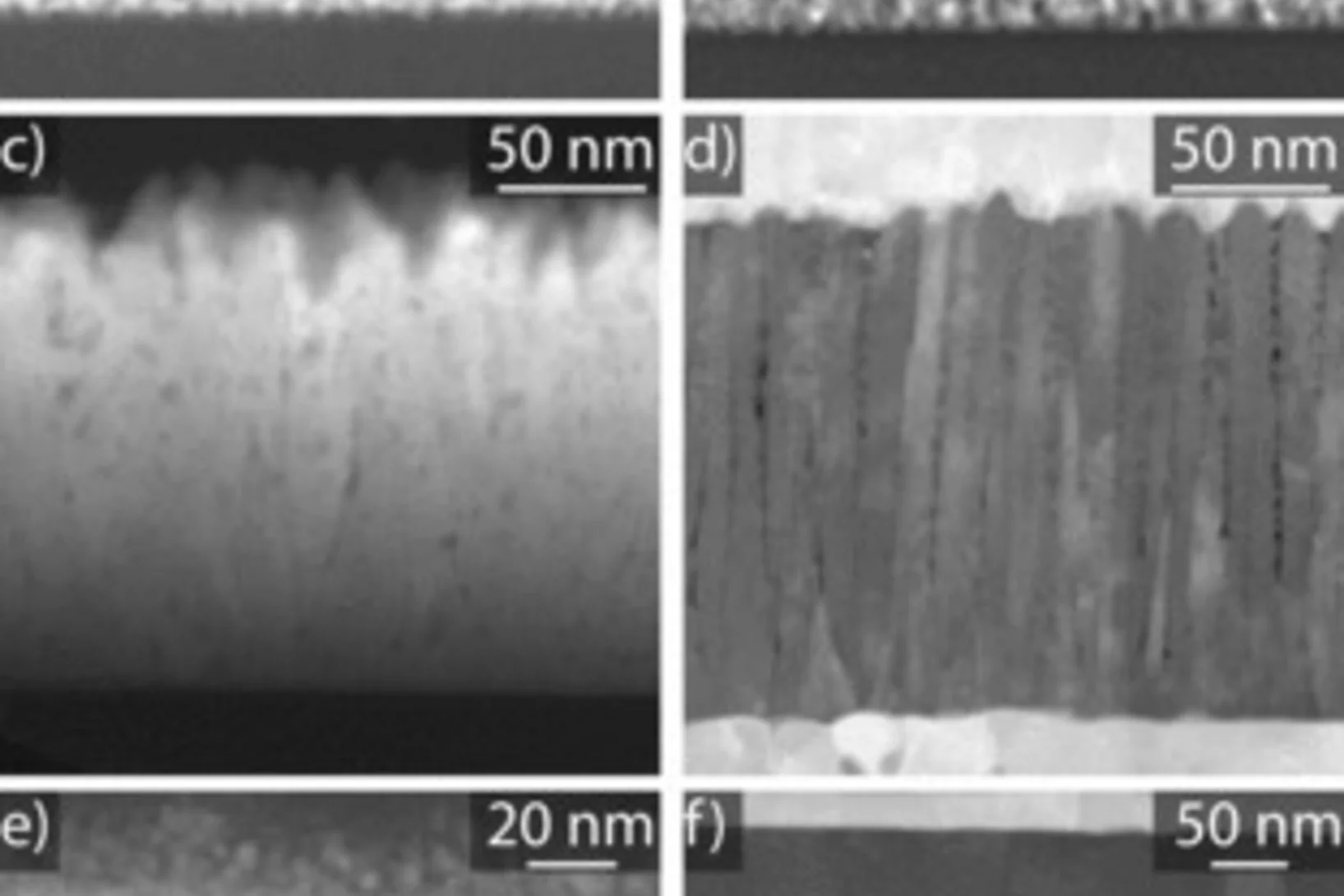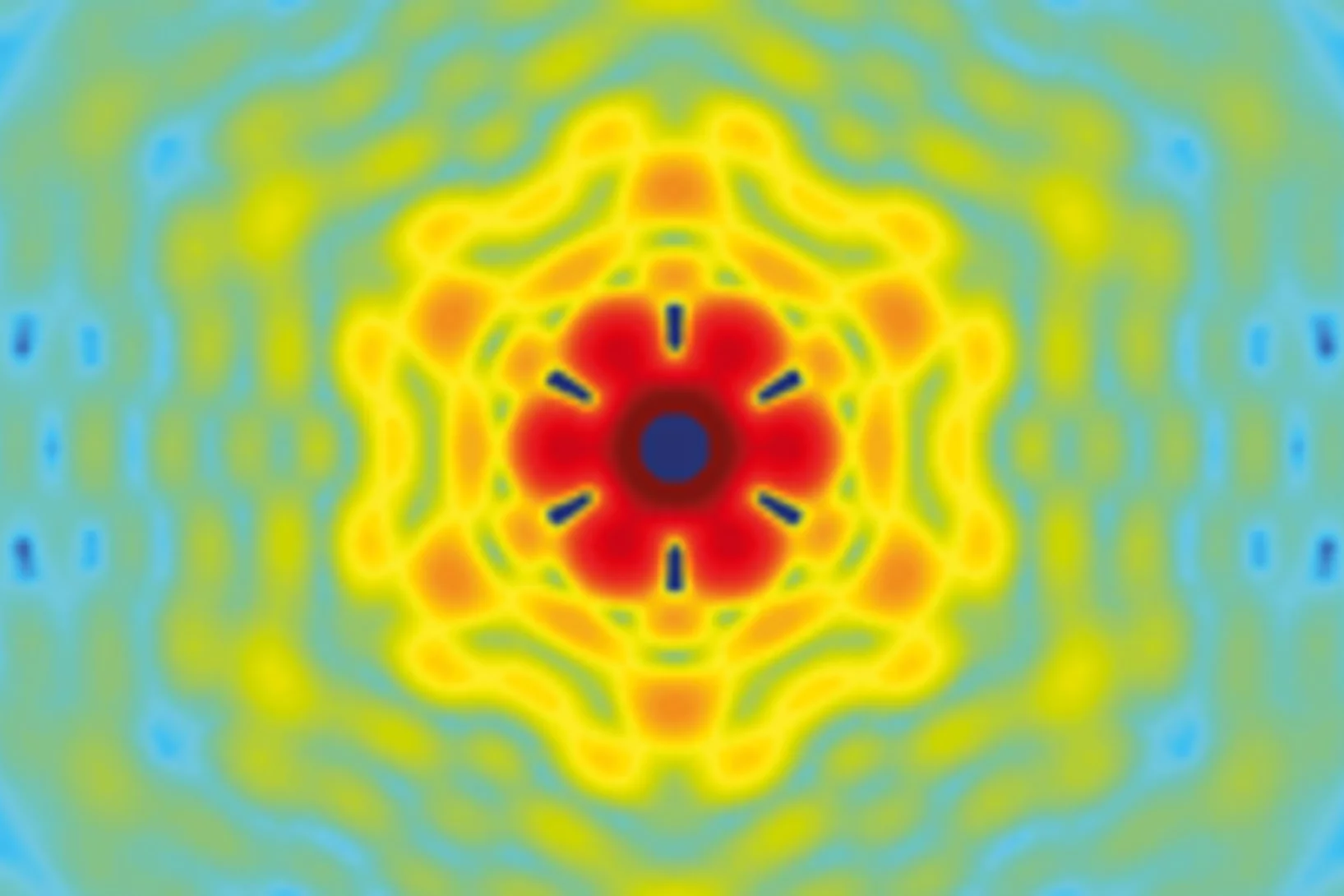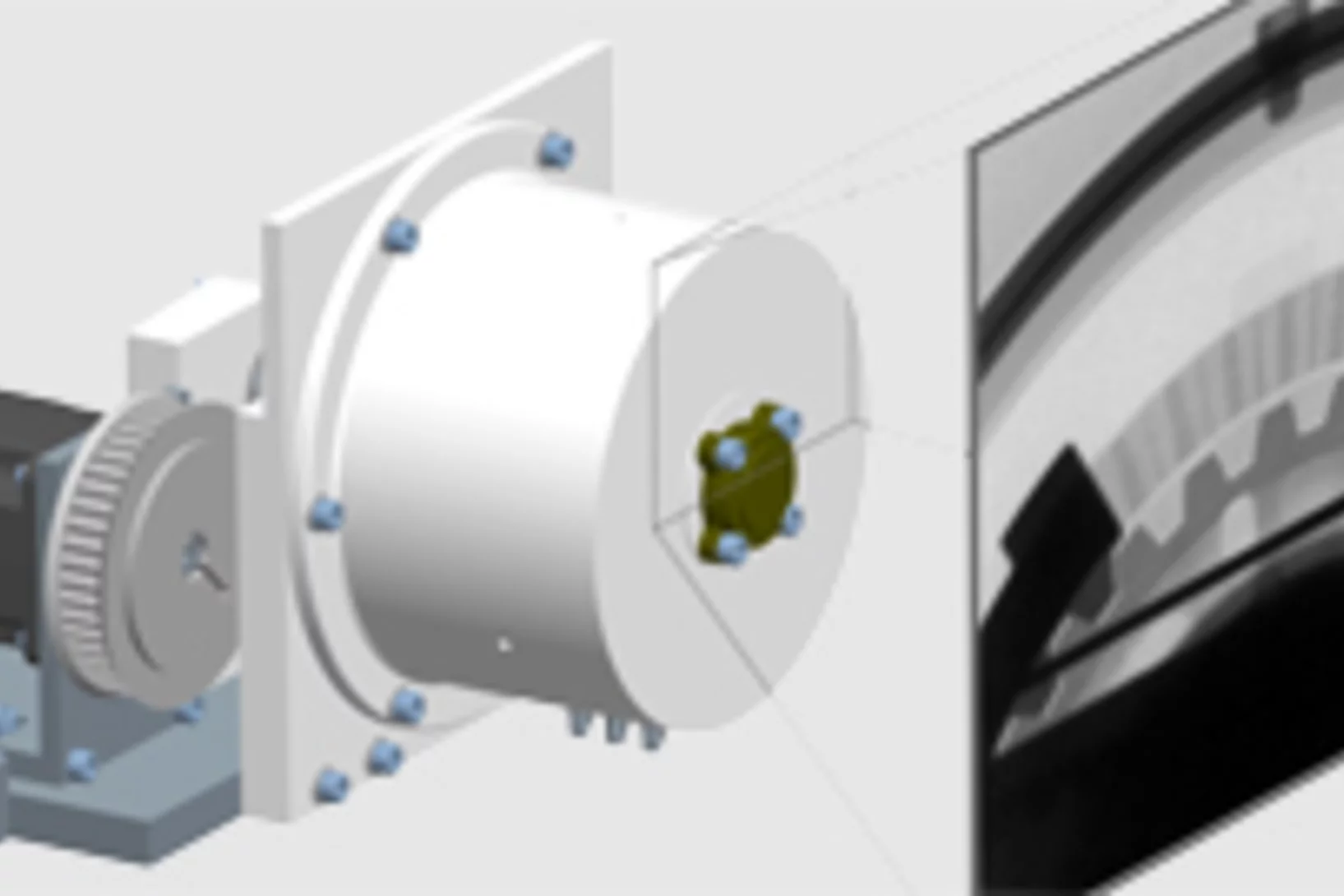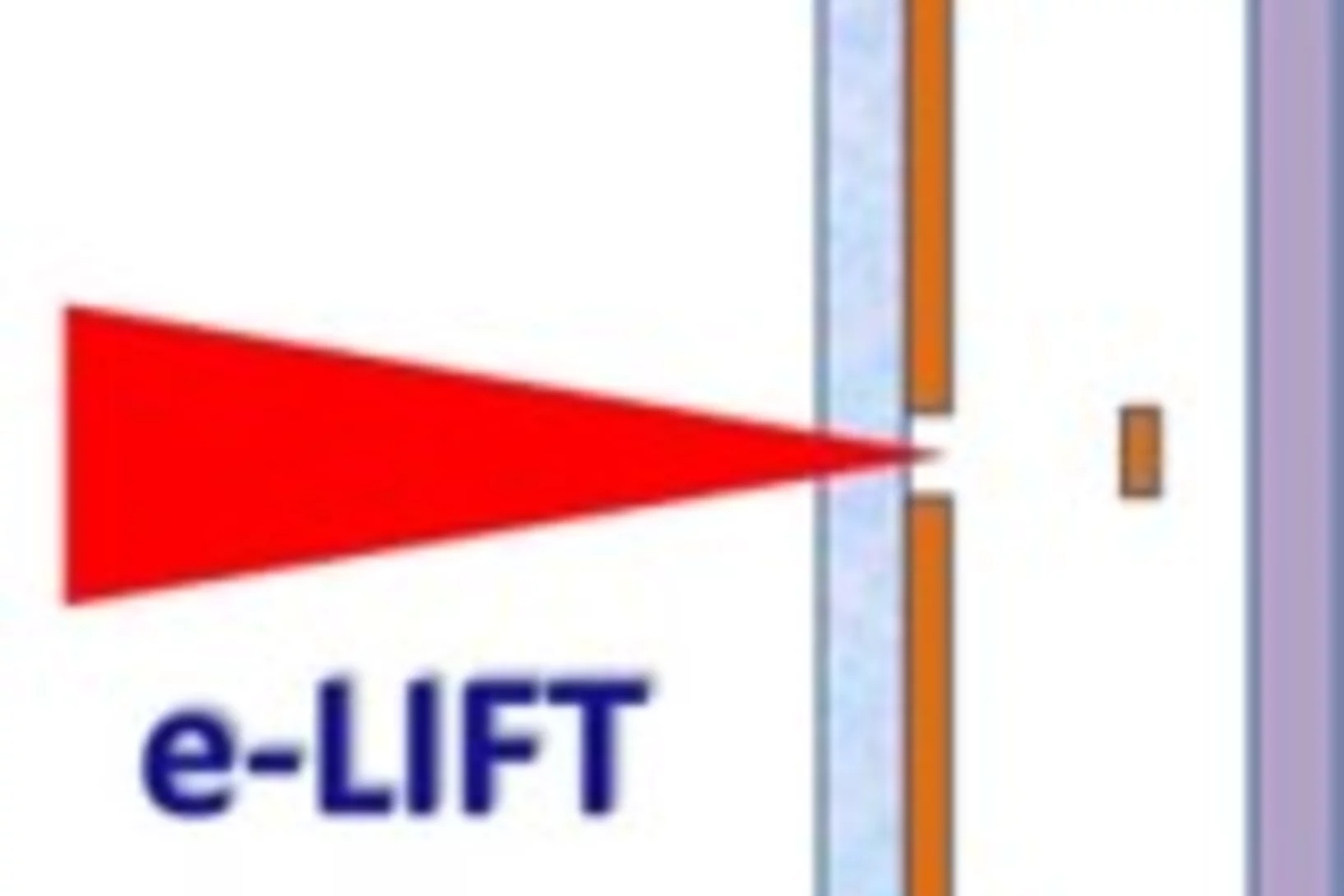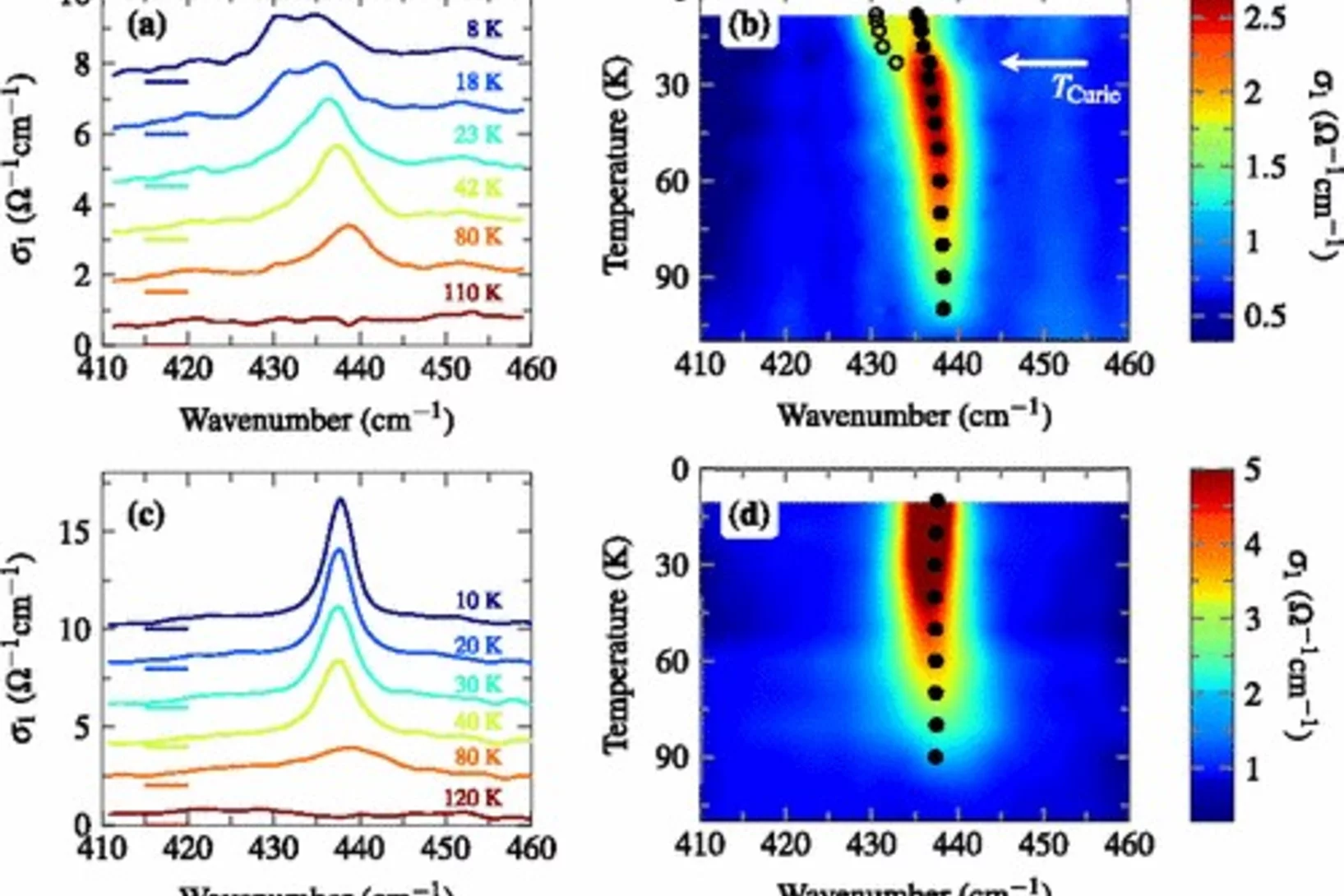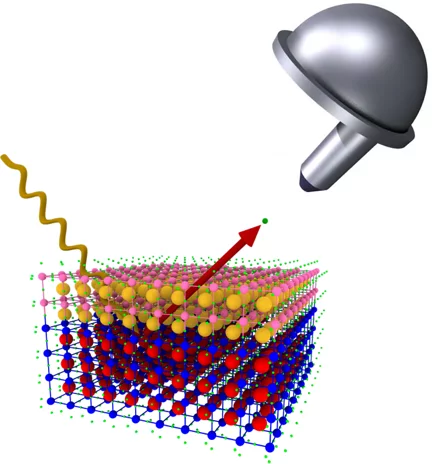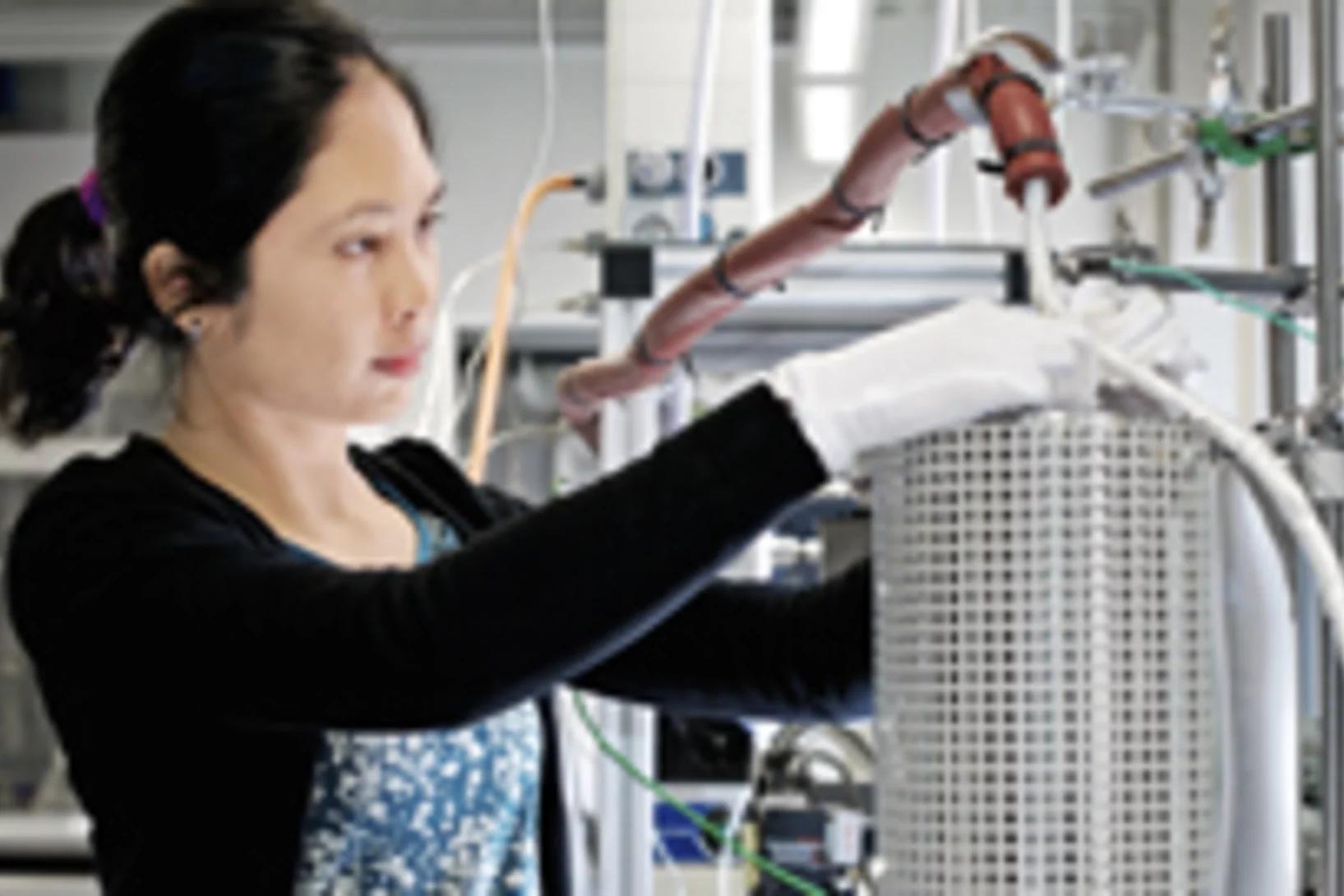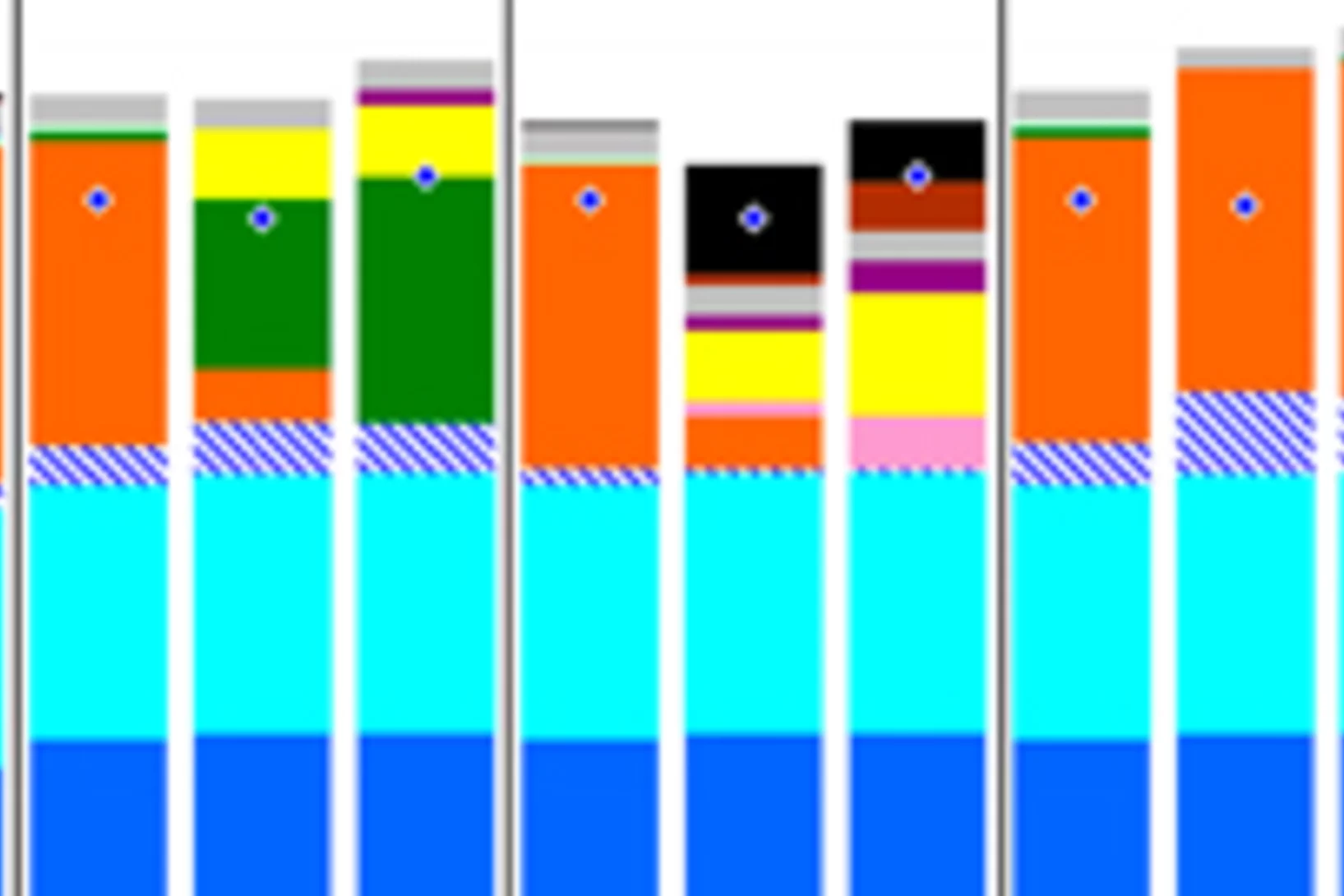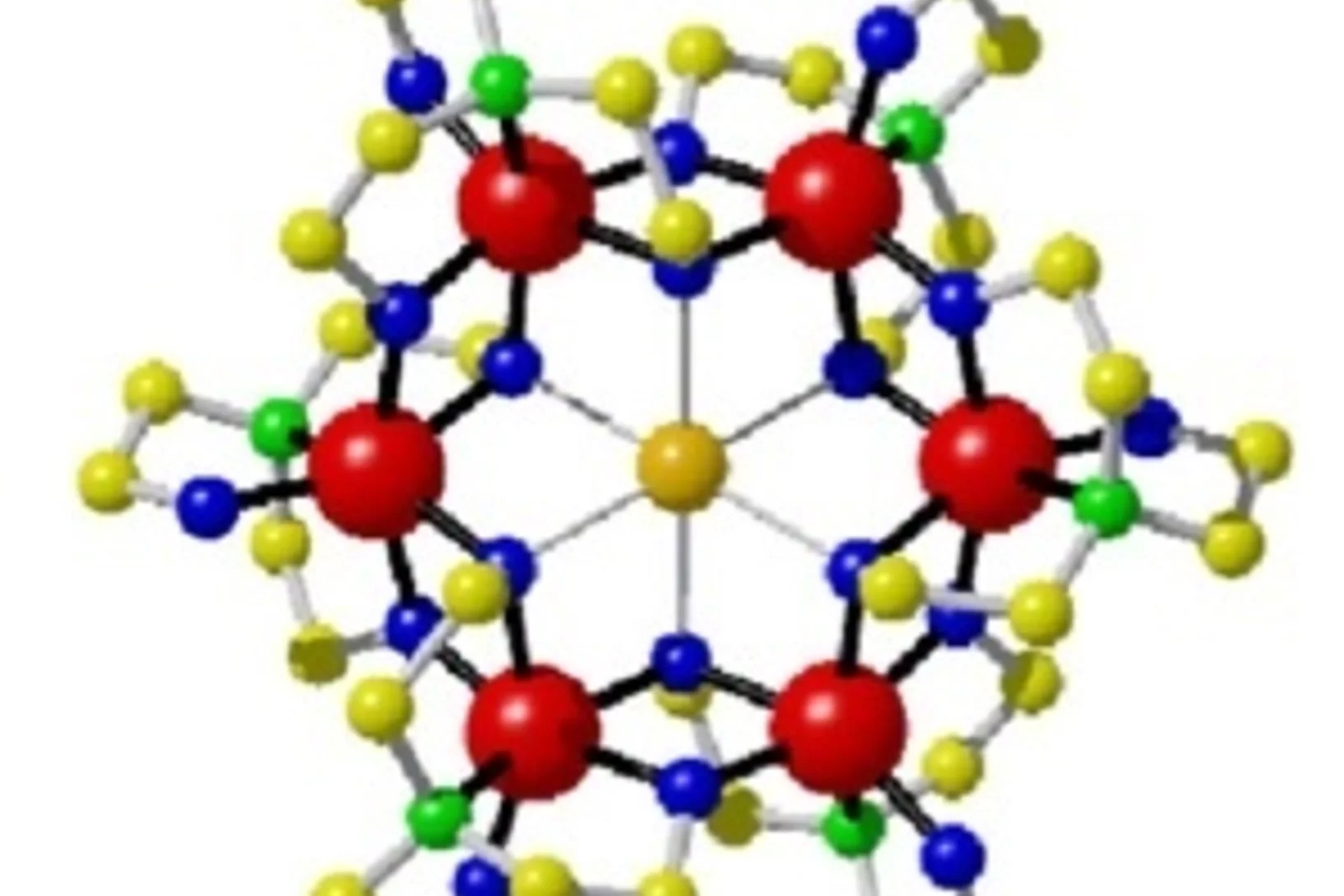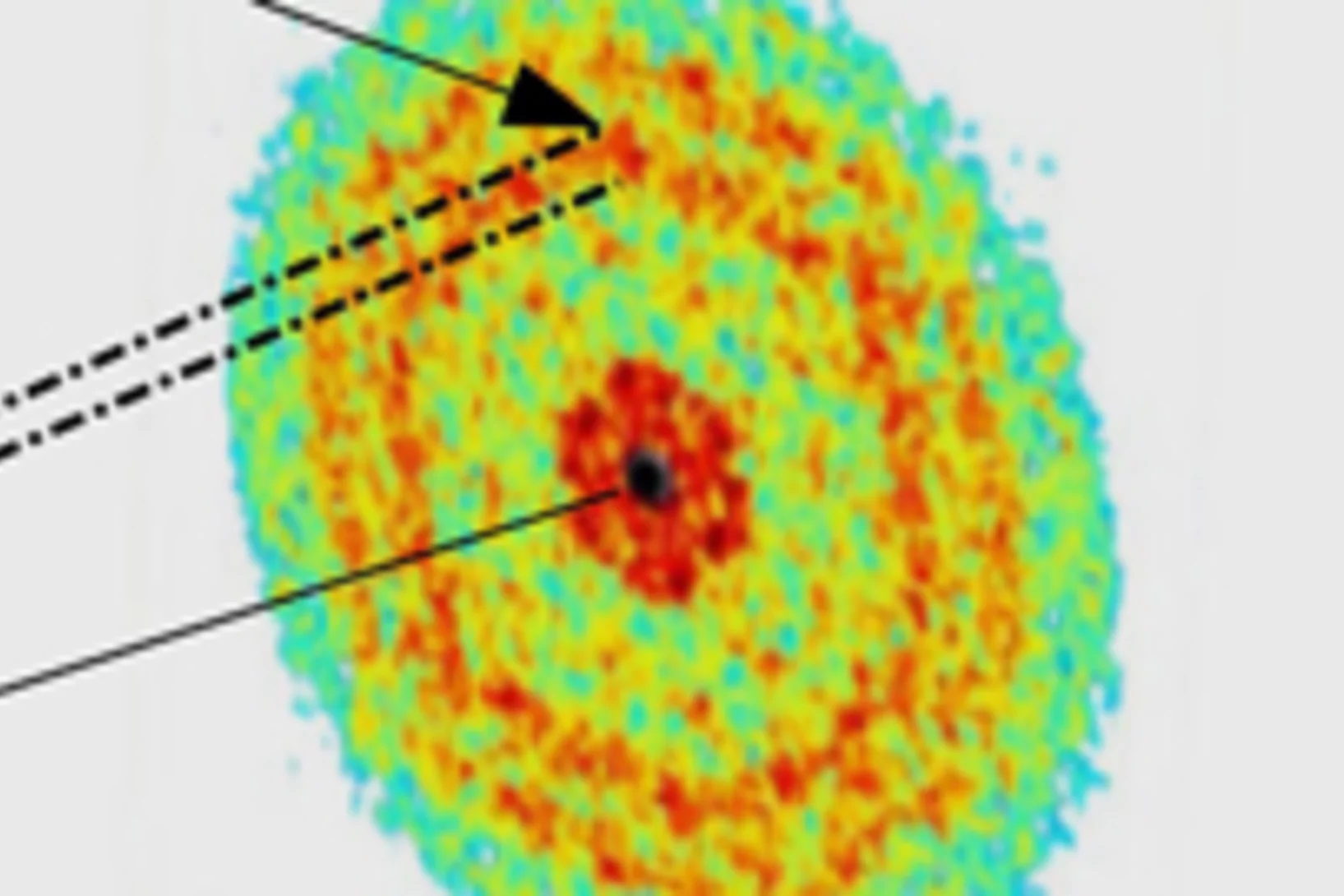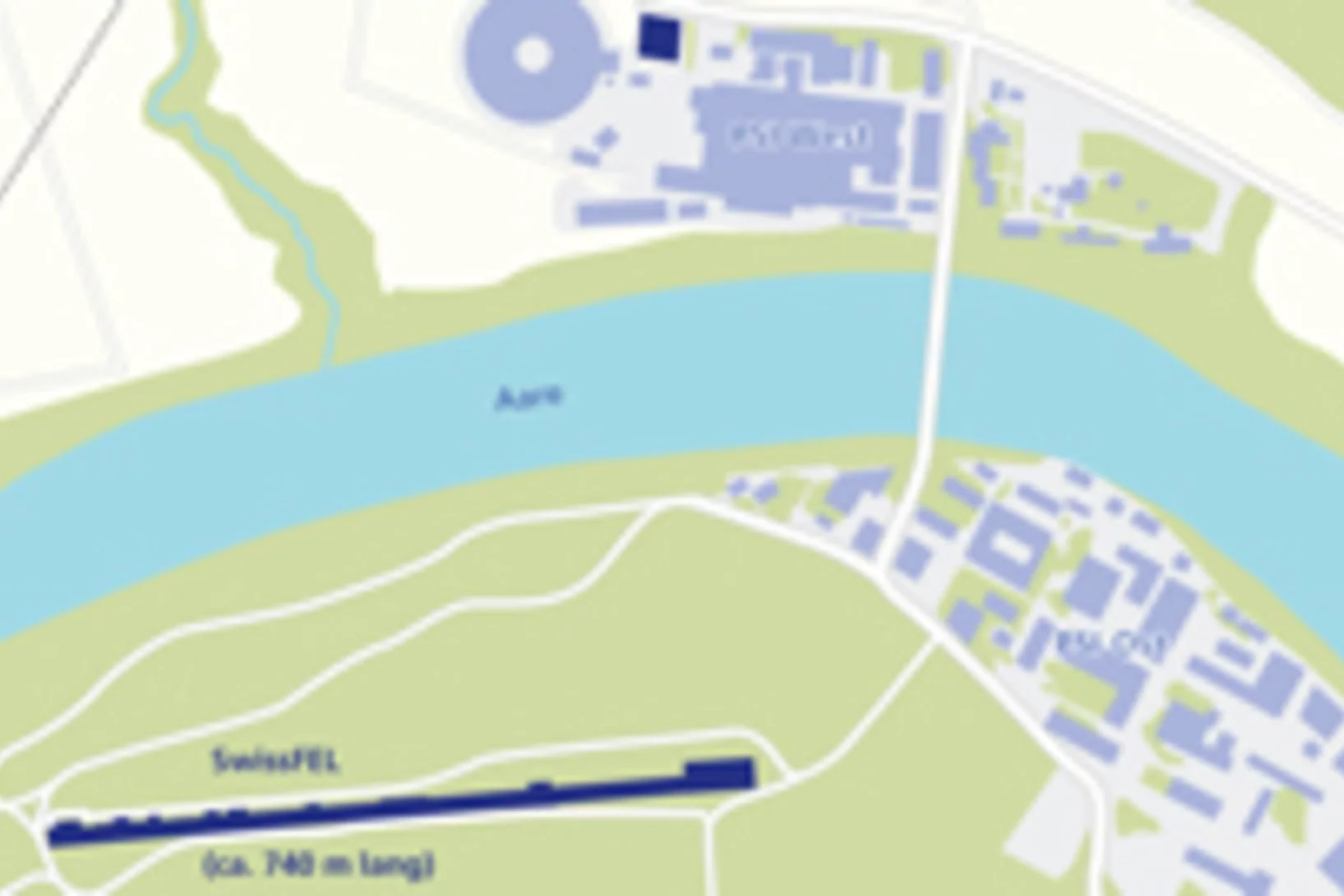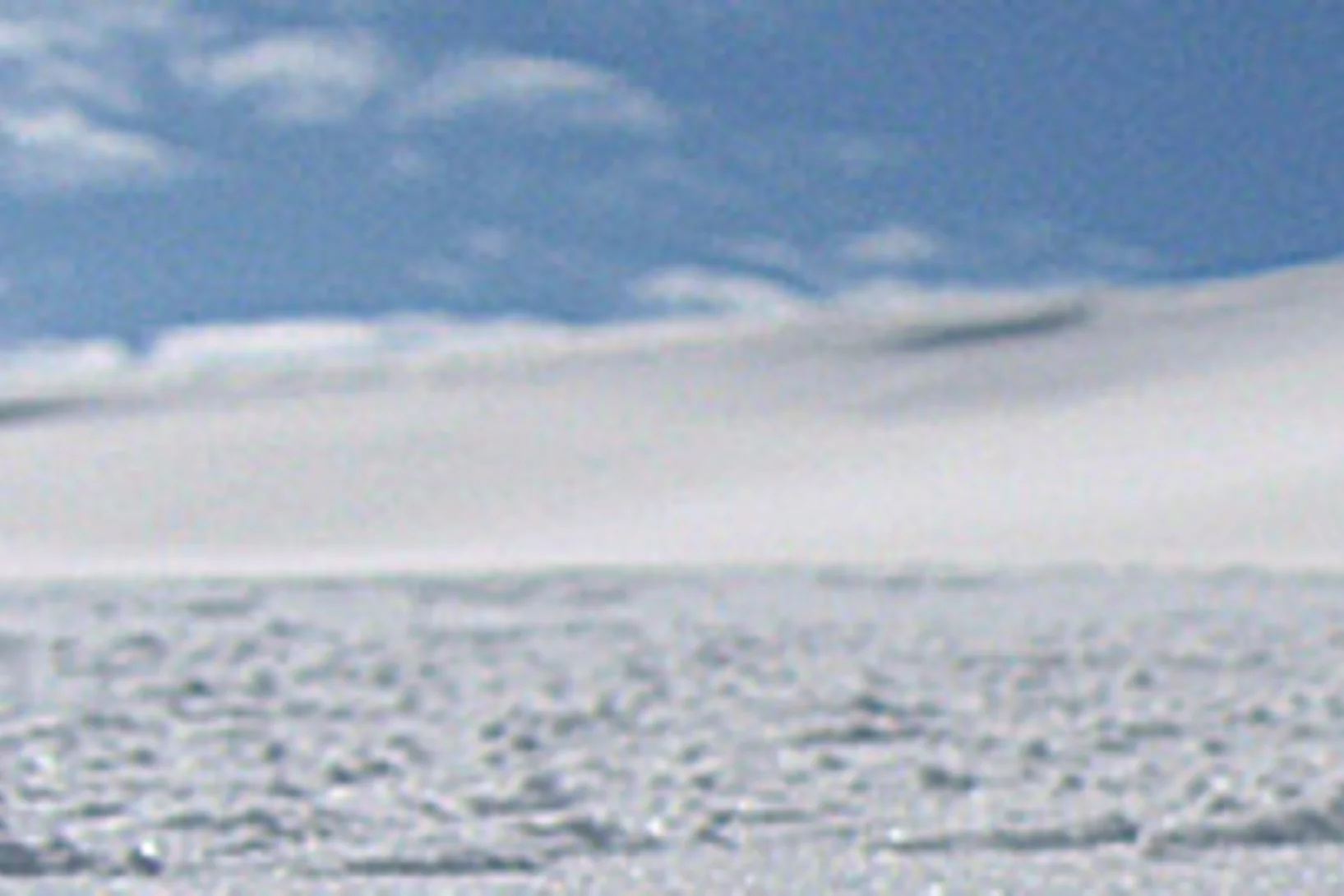Abandon de l’énergie nucléaire, développement de l’énergie solaire et éolienne, production d’énergie à partir de la biomasse, réduction de la consommation d’énergie. D’ici 2050, la Suisse doit atteindre la neutralité climatique. Un objectif ambitieux, rendu plus urgent que jamais par une situation géopolitique de plus en plus difficile. Comment faire pour mettre en place ces prochaines années un approvisionnement énergétique durable et résistant pour la Suisse? Comment les énergies renouvelables peuvent-elles être utilisées de manière optimale? Quelles sont les nouvelles technologies les plus prometteuses? Au PSI, des chercheurs s’efforcent de trouver des réponses à ces questions décisives.
Incinération des déchets : la panacée, vraiment ?
Autrefois, les déchets ménagers finissaient tous, sans exception, dans des décharges, et ce sans avoir subi le moindre traitement en amont. Conséquence de cette pratique : le site de la décharge finissait souvent par devenir une « zone écologiquement morte ». L’incinération municipale des déchets a quelque peu désamorcé le problème : c’est en effet uniquement grâce à elle et au recyclage, que la surface occupée par les décharges a pu être contenue au cours des dernières décennies, en dépit de l’augmentation globale des quantités de déchets. Toutefois, l’incinération des déchets est loin d’être la panacée. Certains produits de l’incinération, soit ceux qui étaient déjà presents dans les produits incinérés ou ceux qui provient de l’incinéreation elle-même et qui sont dommageables pour la santé et l’environnement, finissent en effet dans des décharges, en dépit de leur passage par les usines d’incinération.
Des expériences en quelques millionièmes de secondes
Les muons sont des particules élémentaires instables, qui permettent aux chercheurs d’étudier la structure de la matière. Ils leur fournissent des informations sur les processus qui se jouent au cur de certains matériaux modernes, sur les propriétés des particules élémentaires et sur les structures fondamentales du monde physique. De nombreuses expériences utilisant des muons ne sont possibles qu’à l’Institut Paul Scherrer, car le PSI dispose de faisceaux de muons particulièrement intenses.
Qualité de l’air de Paris : la métropole vaut mieux que sa réputation
Dans l’opinion publique, les métropoles sont souvent perçues comme d’importantes sources de pollution atmosphérique à aussi de leur périphérie à. Pourtant, selon les dernières études, ces villes de plusieurs millions d’habitants s’en sortent plutôt bien, au niveau écologique. Sur la base de mesures des aérosols réalisées à Paris, une équipe internationale de chercheurs, incluant des membres de l’Institut Paul Scherrer (PSI), confirme que les métropoles postindustrielles influencent beaucoup moins la qualité de l’air de leur environnement proche qu’on ne l’imagine.
Collectionneur d'idées d'expériences
Le laser à rayons X SwissFEL devrait offrir aux chercheurs la possibilité de mener des expériences novatrices, et de tirer des enseignements importants pour leurs domaines de spécialité. Mais comment savoir qui sont les chercheurs susceptibles de tirer profit de cet instrument, quelles sont les interrogations que l’on pourra y explorer, et quels seront les équipements nécessaires pour que cet instrument puisse être exploité au mieux ? Réponses avec Bruce Patterson, le collectionneur d’idées d’expériences. Cet entretien a paru en allemand dans la dernière édition du magazine du PSI « Fenster zur Forschung ».
Tiny Magnets as a Model System
Scientists use nano-rods to investigate how matter assembles
In the microscopic world, everything is in motion: atoms and molecules vibrate, proteins fold, even glass is a slow flowing liquid. And during each movement there are interactions between the smallest elements - for example, the atoms - and their neighbours. To make these movements visible, scientists at the Paul Scherrer Institute PSI have developed a special model system.
De minuscules aimants comme système modèle
Des scientifiques utilisent des nanobâtonnets pour étudier la manière dont s’ordonne la matièrePour rendre ces interactions entre les atomes visibles, des chercheurs de l’Institut Paul Scherrer (PSI) ont développé un système modèle bien particulier. Il est assez grand pour être observé au microscope à rayons X, tout en imitant les plus petits mouvements qui existent dans la nature. Le modèle se présente comme suit : des anneaux faits chacun de six bâtonnets magnétiques, longs de quelques nanomètres, où le pôle nord du premier bâtonnet attire le pôle sud du suivant, et ainsi de suite. A température ambiante, les directions de magnétisation de chacun des bâtonnets fluctuent sans cesse, et ce de façon naturelle. Les scientifiques ont réussi à observer en temps réel ces interactions magnétiques entre les bâtonnets.
Atomic motions untangled
The pursuit of capturing motion in a movie bears an obvious fascination irrespective of the time scales involved. In the atomic and molecular world where the masses are so light and the distances small the relevant time scale shifts to the ubpicosecond range and the motions become frantic especially for larger molecular systems
Atomic motions untangled
The pursuit of capturing motion in a movie bears an obvious fascination irrespective of the time scales involved. In the atomic and molecular world where the masses are so light and the distances small the relevant time scale shifts to the subpicosecond range and the motions become frantic especially for larger molecular systems.
Alternativ-Routen für Velofahrer und Fussgänger
Durch die Bauarbeiten für den SwissFEL kommt es im Würenlinger Wald zu Sperrungen und Umleitungen. Alternativ-Routen für Velofahrer und Fussgänger werden angeboten.Cette actualité n'existe qu'en allemand.
Effect of surface charge density on the affinity of oxide nanoparticles for the vapor–water interface
Using in-situ X-ray photoelectron spectroscopy at the vapor-water interface, the affinity of nanometer-sized silica colloids to adsorb at the interface is shown to depend on colloid surface charge density. In aqueous suspensions at pH 10 corrected Debye-Hückel theory for surface complexation calculations predict that smaller silica colloids have increased negative surface charge density that originates from enhanced screening of deprotonated silanol groups by counterions in the condensed ion layer.
Stockage d’énergie : un dispositif de carbone ultramince
En 2010, deux physiciens d’origine russe se sont vu décerner le prix Nobel pour la découverte et la caractérisation du graphène : un matériau d’épaisseur monoatomique, composé d’une seule couche de carbone. Leur découverte a fait grand bruit, car à maints égards, le graphène est un matériau exceptionnel. Depuis qu’il a été isolé pour la première fois, les scientifiques du monde entier se sont donc jetés dessus, en quête d’applications. Des chercheurs de l’Institut Paul Scherrer (PSI) on a présent élaboré les fondements d’un supercondensateur à base de graphène. Ce dernier pourrait contribuer, par exemple, à allonger notablement la durée de vie des batteries des voitures hybrides.
Les travaux démarrent dans la forêt de Würenlingen
Les travaux de construction du SwissFEL ont démarré, dans la forêt de Würenlingen. Les 18 prochains mois verront s’ériger le bâtiment destiné à accueillir le nouveau grand instrument de l’Institut Paul Scherrer PSI.
Travaux de recherche avec SwissFEL: étude des matériaux magnétiques
Dans le domaine des technologies modernes les matériaux à caractéritiques magnétiques spécifiques jouent un rôle important à par exemple les disques durs sur lesquels sont stockés les informations de l’ordinateur . Les travaux de recherche sur SwissFEL contriburont au développement de nouveaux matériaux magnétiques et permettront d’observer en ‚live’ les transformations rapides qu’ils subissent. Ainsi il sera possible d’observer ce qui se passe à l’intérieur d’un disque lorqu’on modifie le contenu d’une mémoire .
Germanium – zum Leuchten gezogen
Forscher des PSI und der ETH Zürich haben mit Kollegen vom Politecnico di Milano in der aktuellen Ausgabe der wissenschaftlichen Fachzeitschrift "Nature Photonics" eine Methode erarbeitet, einen Laser zu entwickeln, der schon bald in den neuesten Computern eingesetzt werden könnte. Damit könnte die Geschwindigkeit, mit der einzelne Prozessorkerne im Chip miteinander kommunizieren, drastisch erhöht werden. So würde die Leistung der Rechner weiter steigen.Cette actualité n'existe qu'en allemand.
Radiation grafted membranes developed at PSI outlast state-of-the art commercial membranes in the fuel cell
Components for the polymer electrolyte fuel cell (PEFC) are required to show high performance and durability under application relevant conditions. Furthermore, for commercial viability the materials and processes for component fabrication need to be of los cost. The polymer electrolyte membrane developed at PSI on the basis of the radiation grafting technique has the potential of being produced in cost-effective manner. In recent years, we have collaborated with the Belenos Clean Power to further develop the membrane to commercial competitiveness.
On Proton Conductivity in Porous and Dense Yttria Stabilized Zirconia at Low Temperature
The electrical conductivity of dense and nanoporous zirconia-based thin films is compared to results obtained on bulk yttria stabilized zirconia (YSZ) ceramics. Different thin film preparation methods are used in order to vary grain size, grain shape, and porosity of the thin films. In porous films, a rather high conductivity is found at room temperature which decreases with increasing temperature to 120 °C. This conductivity is attributed to proton conduction along physisorbed water (Grotthuss mechanism) at the inner surfaces.
Un effet mémoire découvert également dans les batteries Li-ion
Les batteries lithium-ion sont des batteries de puissance utilisées pour le stockage de l’énergie de nombreux appareils électroniques. Elles peuvent emmagasiner une quantité importante d’énergie pour un volume et un poids relativement faibles. Par ailleurs et ce jusqu'à présent, elles ont eu la réputation de ne pas être sensibles à l’effet mémoire. C’est ainsi que les spécialistes désignent une déviation du potentiel de la batterie, cette dernière est causée quand la batterie n’est pas complètement chargée ou déchargée. Le résultat en est que l’énergie stockée n’est que partiellement disponible et il n’est alors plus possible de procéder à une estimation fiable de l’état de charge de la batterie. Des chercheurs de l’Institut Paul Scherrer (PSI) et leurs collègues des Toyota Central R&D Labs, Inc, au Japon, ont à présent identifié un effet mémoire dans un type de batteries lithium-ion très répandu. Cette découverte revêt une importance toute particulière dans la perspective de l’arrivée imminente des batteries lithium-ion sur le marché du véhicule électrique. Leur travail paraît aujourd’hui dans la revue spécialisée Nature Materials.
La voie dorée pour étouffer les gaz nocifs dans un pot d’échappement
L’urée en solution aqueuse permet de nettoyer les gaz d’échappement, issus de la combustion du diesel, de leurs oxydes d’azote nocifs. L’urée se dégrade en ammoniaque et, à son tour, ce dernier réduit les oxydes d’azote en azote inoffensif. L’urée en solution peut toutefois former des résidus indésirables, mais aussi geler en cas de grand froid. Des chercheurs de l’Institut Paul Scherrer (PSI) ont maintenant développé un catalyseur, qui permet d’utiliser des agents réducteurs plus efficaces que l’urée pour la réduction de l’oxyde d’azoteCette actualité n'existe qu'en allemand.
Röntgen-Laser: Auf dem Weg zur Strukturbestimmung von Nanoteilchen
An Freie-Elektronen-Röntgen-Lasern wie dem zukünftigen SwissFEL des Paul Scherrer Instituts (PSI) sollen unter anderem die Strukturen von komplexen Nanoteilchen bis hin zu Biomolekülen untersucht werden. Dabei ist nicht nur die eigentliche Messung eine Herausforderung, sondern auch die Rekonstruktion der Struktur aus den Messdaten. Forscher des PSI haben nun einen optimierten mathematischen Weg aufgezeigt, wie man aus so gewonnen Messdaten eine deutlich bessere Auflösung bei der Bestimmung der Struktur eines einzelnen Teilchens erhält. Das Verfahren wurde an der Synchrotron Lichtquelle Schweiz des PSI erfolgreich getestet.Cette actualité n'existe qu'en allemand.
Observer l’huile de moteur derrière le métal
Les développeurs de l’entreprise LuK (D) rêveraient de pouvoir voir à travers le boîtier d’un embrayage. Ils aimeraient y observer la répartition de l’huile qui le lubrifie et le refroidit. Mais une vitre transparente est vite sale et les rayons X ne permettent de voir que le métal. Les ingénieurs se sont donc tournés vers les scientifiques de l’Institut Paul Scherrer (PSI), qui ont pu radiographier le métal avec des neutrons et rendre visible l’huile lubrifiante. Le résultat a surpris tout le monde : seuls trois disques sur huit étaient suffisamment lubrifiés.
Applications of laser printing for organic electronics
The development of organic electronic requires a non contact digital printing process. The European funded e-LIFT project investigated the possibility of using the Laser Induced Forward Transfer (LIFT) technique to address this field of applications. This process has been optimized for the deposition of functional organic and inorganic materials in liquid and solid phase, and a set of polymer dynamic release layer (DRL) has been developed to allow a safe transfer of a large range of thin films.
Electric-Field-Induced Polar Order and Localization of the Confined Electrons in LaAlO3/SrTiO3 Heterostructures
With ellipsometry, x-ray diffraction, and resistance measurements we investigated the electric-field effect on the confined electrons at the LaAlO3/SrTiO3 interface. We obtained evidence that the localization of the electrons at negative gate voltage is induced, or at least enhanced, by a polar phase transition in SrTiO3 which strongly reduces the lattice polarizability and the subsequent screening. In particular, we show that the charge localization and the polar order of SrTiO3 both develop below ∼50 K and exhibit similar, unipolar hysteresis loops as a function of the gate voltage.
Soft x-ray photoelectron spectroscopy on buried complex oxide interfaces: a new method to diagnose authentic protected electronic structures
Exotic phenomena at interfaces of complex oxides are highly promising for future solid-state electronics applications. A prominent example is the interface of two wide band gap insulators formed by growing a LaAlO3 layer on TiO2-terminated SrTiO3 substrate. When the LaAlO3 thickness exceeds 3 unit cells this system undergoes a sharp insulator-to-metal transition with a two-dimensional electron gas (2DEG) appearing at the interface.
Du méthane au méthanol – ou comment éteindre les torches du gaspillage
Sur les photos prises de nuit depuis l’espace, le flot lumineux des éclairages permet d’identifier facilement les grandes métropoles de la planète. Mais il faut un il exercé pour apercevoir sur ces images satellite, à part New York ou Tokyo, les sites de certains puits de pétrole. La lumière qui les signale provient surtout de la combustion de méthane. Le gaspillage d’une ressource naturelle aussi précieuse a des consequences négatives d’un point de vue économique ansi que pour l’environnement. Des scientifiques de l’Institute Paul Scherrer PSI sont à la recherche d’une solution : la transformation du méthane en méthanol.
Scénarios pour la transformation du système électrique en Suisse
Des chercheurs de l’Institut Paul Scherrer (PSI) ont analysé l’évolution du secteur suisse de l’électricité au travers de différents scénarios, en se servant de leur modèle STEM-E. Leur conclusion : toutes les alternatives à l’approvisionnement actuel en électricité devraient entraîner une augmentation des coûts des systèmes. Il se pourrait, par ailleurs, que des concessions doivent être faites au niveau de certains objectifs relevant du développement durable, comme la protection du climat et l’indépendance de la Suisse par rapport à l’étranger en matière d’approvisionnement en énergie. L’analyse indique que d’ici 2050, les coûts de production d’électricité augmenteront probablement d’au moins 50 pour cent.
Magnetic Cluster Excitations
Magnetic clusters, i.e., assemblies of a finite number (between two or three and several hundred) of interacting spin centers which are magnetically decoupled from their environment, can be found in many materials ranging from inorganic compounds and magnetic molecules to artificial metal structures formed on surfaces and metalloproteins.
Avantage du SwissFEL: Pourquoi un laser?
Le SwissFEL produira des flashs de rayons X très brefs et très intenses ayant les propriétés du laser. Les propriétés du laser rendent la lumière particulièrement intense et permettent de determiner exactement la structure de molécules, avec de la lumière normale on obtient au mieux une image diffuse.
Une nouvelle génération d’accumulateurs au lithium se rapproche de la production à l’échelle industrielle
En matière de stockage d’énergie, les batteries lithium-ion (Li-ion) représentent aujourd’hui l’une des meilleures technologies disponible sur le marché. Elles sont en effet dotées d’une haute densité énergétique , d’une grande énergie spécifique , mais aussi d’une durée de vie suffisamment longue pour être mises à profit dans les appareils microélectroniques et les voitures électriques voire hybdride. Leur ascension commerciale dans les dernières deux décennies est impressionnante. Mais des améliorations sont toujours possibles, et à l’Institut Paul Scherrer (PSI) aussi, des chercheurs y travaillent. Toutefois, le potentiel de la batterie lithium-ion est chimiquement limité : l’obtention d’une densité énergétique plus élevée, qui revêt une importance cruciale pour le marché du véhicule électrique, n’est possible qu’avec d’autres types d’accumulateurs.
La voie est libre pour le SwissFEL
La production de l’ensemble des autorisations nécessaires donne le coup d’envoi pour la construction du SwissFEL, le nouveau grand instrument de recherche de l’Institut Paul Scherrer PSI.
Neige et glace : les grandes inconnues.
La glace et la neige revêtent une importance fondamentale pour le climat. Communément, on part du principe que la science connaît bien les fondements de phénomènes aussi ordinaires. Mais au niveau moléculaire, de nombreuses questions restent ouvertes. Or ce savoir serait essentiel pour établir des prévisions sur l’avenir de notre planète. Entretien sur ces grandes inconnues, avec Thorsten Bartels-Rausch.


